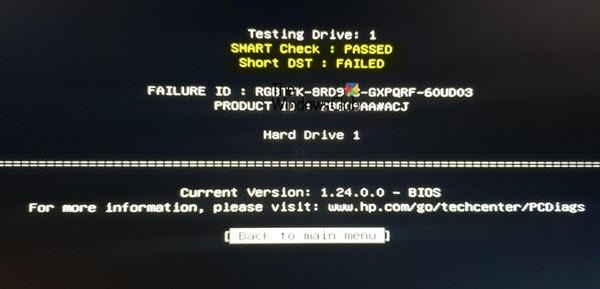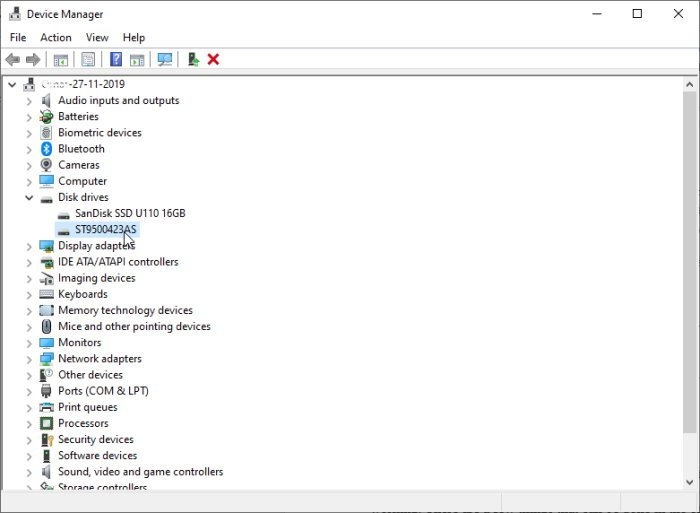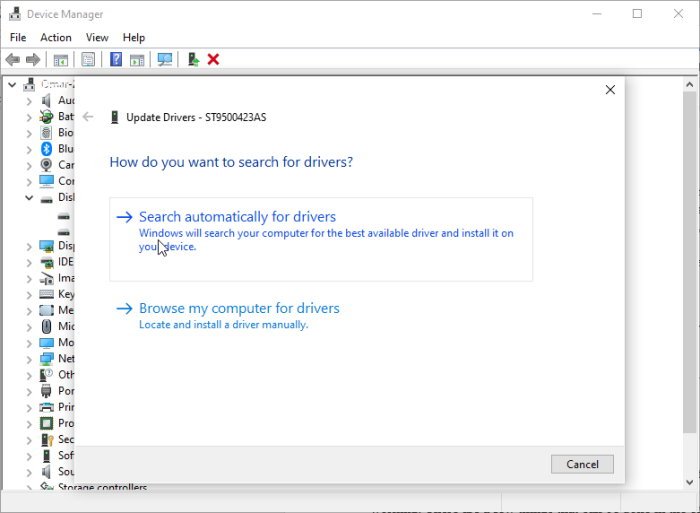Smart Check passed, Short DST Failed error is a sign that something is wrong with the hard drive. One neat thing about computers is their ability to self-monitor. One component that does self-monitoring is the Hard Drive. Hard drives use S.M.A.R.T. (Self-Monitoring, Analysis, and Reporting Technology) to measure their reliability and see if they are failing.

What is S.M.A.R.T
S.M.A.R.T (Self-Monitoring, Analysis, and Reporting Technology) is used by hard drives to measure their reliability and see if they are failing. The S.M.A.R.T capability is built into every hard drive and tests every aspect of its performance to make sure it is performing up to the required standards. S.M.A.R.T will check on aspects from Read/Write speed, error rates to the internal temperature. Each time the computer starts a Short Disk Self Test is performed.
What is DST
DST means Disk Self Test, there are two types of self-tests that a hard drive can perform.
- Short Disk Self Test
- Long Disk Self Test
Whenever your hard drive performs a Short Disk Self Test, it quickly checks its components. The short DST only focuses on the major components, such as the Read/Write head, ROM, control board, platter, and motor. The self-test makes sure that these major components are functioning properly and will return a warning message if any of them are not. This check only takes a few minutes, and you can still use the hard drive.
In a Long/Extended Disk Self Test, the major components will be tested along with the data on the platter. If the Long DST discovers damaged or corrupt areas on the disk, it will try to reallocate and remap the damaged portions. This would ensure the hard drive will not run into these bad areas again. During the Long DST, the hard drive cannot be used until the test is finished.
Both short and Long DST are non-destructive tests, they will not damage or alter the date on the hard drive.
When a hard drive fails a long or a short DST, it means that it is no longer able to function properly. It is best to backup data and get a replacement hard drive. Depending on the cause of the DST error, it might be possible to recover data. There may be a DST error, and then the hard drive dies immediately, or after a few weeks, months, or even years. However, it is best to back up data at the first sign of DST error. This is critical because you do not know how long the hard drive will work.
Smart Check passed, Short DST Failed
Every hard drive will do a Short DST upon startup. Your HP computer has a diagnostic tool built right in that will run at startup. When the test returns an error, it is best to backup important data right away if you were not doing so already. You cannot always depend on your computer to send back an error message when components are failing, so it is best to regularly do disc scans and back up data. There may or may not be an error message stating that there is a Short DST failure but there are signs that this may be near. Here are a few things that could mean that there may be an impending short DST failure.
- The computer slows down and is sluggish
- The computer restarts constantly, and the hard drive light flashes intermittently
- The computer hard drive won’t boot and you get a blank screen.
Note that these signs may also be linked to other problems so do a step by step check to rule out other potential problems.
Can Short DST Failed error be fixed?
Usually, when there is a short DST error, there is no way to tell when the hard drive will eventually fail. It is best to always backup data to keep it safe in case the hard drive stops working. A few things can be done in the case of a short DST fail error.
- Be proactive
- Update driver
- Physically check hard drive
- Replace hard drive
1] Be proactive
The best action is to act before the event occurs. Backup data regularly to minimize the loss in the event of a hard drive failure. A local backup such as an external hard drive can be used. Some external hard drives even offer encryption technology to keep data safe.
You may also choose to make use of Microsoft One Drive to backup data to the cloud. The advantage of using Microsoft One Drive is that the data is accessible anywhere in the world. There is no law against using both backup options. It is better to have the data in multiple places just in case one fails.
2] Update driver
Update the hard drive’s driver to make sure it is up to date. This will help to eliminate the possibility than an outdated driver is the cause of the error.

Click Start and type Device Manager, click the arrow to expand disk drives, right-click on your drive, and click Update Driver.

Click search automatically for driver. This will update the driver for your hard drive, or it will tell you that you have the latest driver installed.
3] Physically check the hard drive
Short DST fail error can be caused by other reasons that have to do with the connection between your hard drive and the computer. If the connecting cable is loose or degraded, this could result in performance issues because data cannot flow properly to and from the hard drive. Reconnecting or replacing the cable may fix a short DST failure error.
It may also help to check the hard drive in another computer, this may be better on a desktop computer. This will serve two important purposes: this will show if the hard drive is working, and if it does, it could show that the computer might have other problems. Connecting to another computer could also help with the backup of important data if the hard drive does work on the second computer. In some cases, the hard drive can be placed in an external enclosure and then be connected to another computer via USB port. This will allow for the recovery of data if the hard drive does come up.
4] Replace the hard drive
It may be time to face reality and replace the hard drive to minimize the loss of data. Keeping the hard drive in might give a false sense of hope and then the hard drive fails suddenly, and data is lost. A short DST fail error does not give a timeline when the hard drive will fail, it could be days, weeks, months, or years. Keeping the hard drive in use is a risk that you have to be willing to take knowing the consequences. Replacing the hard drive will offer peace of mind because there is no fear of sudden hard drive death.
You can change the hard drive for a regular hard drive or go for a solid-state drive which is much faster. Evaluate the situation to see if it is worth changing the hard drive or just getting a new computer. See if the computer has done its time and replace it if needed. This might be a better option if the computer is old and there is a possibility of other components failing.
Conclusion
Whenever there is a short DST failure, it is best to start with a process of elimination. Do the easiest things first.
Update the hard drive driver, do physical checks such as checking connection cables and sockets, and then check the hard drive on another computer. It is always best to backup your data regularly to minimize data loss. It is always wise to scan the disk for errors as a hard drive may die suddenly without a DST failure message.